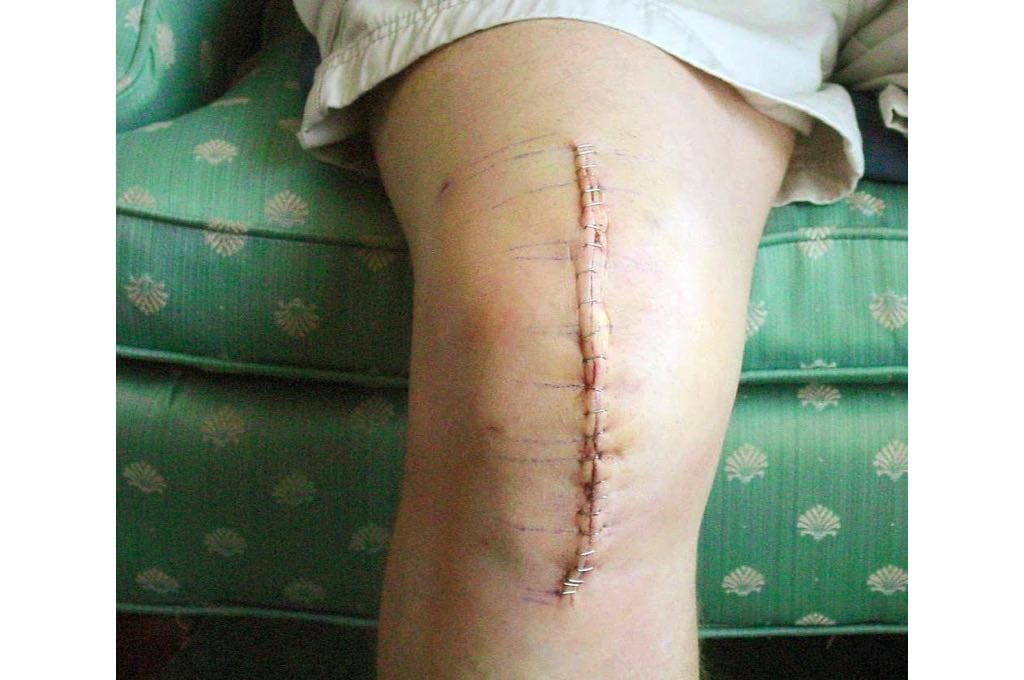A knee revision procedure involves removing and replacing a partial or total knee implant with a new implant. It can be a complex surgical procedure that may require extensive preoperative planning, specialized implants and tools, and a skilled surgeon experienced in difficult surgical techniques.1
With over 580,000 knee replacements performed annually in the United States, 90% of patients experience a favorable outcome and can expect their replaced knee to function well for at least 20 years or more.1 However up to 10% of patients may experience some condition which may require a second surgery, known as revision surgery.
Reasons for revision
The decision to perform a revision surgery is based on several factors. After partial knee replacement osteoarthritis may have advanced to other compartments of the knee. After total knee replacement the implant may have become loose, worn or infected. As the implant fails the patient may experience a limp, stiffness, or instability. X-rays or computer imaging may show a change in the position or condition of the implant components. Assessment of these indicators will help determine when knee revision surgery is needed.2 It’s estimated that over 50% of knee revision procedures will be performed within two years of the initial knee replacement.3
Loosening: Cemented implants can become loose because the cement-bone interface has failed. This is usually due to bone die back, meaning the tiny projections of bone that the cement initially attaches to have either broken off in weight bearing or simply deteriorated due to infection or weak bone (osteoporosis). Non-cemented implants can loosen for much the same reason except it is the implant-bone interface that fails. However, current state-of-the-art materials and techniques have improved the quality of implant fixation to bone which had historically been a weak link that created a potential site of failure.
Wear: The plastic parts of knee replacements are softer than the metal and are more prone towards wear during use. Usually this happens after a long period of time as modern plastics (ultra high molecular weight polyethylene or UHMWPE) are very durable and can withstand a considerable amount of wear and impact. Generally speaking, plastic parts are more likely to wear because the accompanying metal parts are not properly aligned, the plastic itself is misaligned, there is a presence of infection, or because they are very old.
It is known that wear actually begins from day one after surgery but the implants can cope with the early stages of wear very well. Implant manufacturers have significantly decreased the amount of wear particles that are created by friction on joint surfaces. However, after several years there may be a build-up of worn off particles which can cause problems in nearby tissues as microscopic fragments get absorbed into the cells and create inflammatory conditions causing pain.
Infection: With modern surgical techniques the risk of infection from total knee replacement is very low at about 0.5%.2 If infection does occur, it usually arises due to a substance on the devices called bio-film. This organic material is a microscopic layer of fungal material containing microbes living in a state of hibernation. All implanted devices have this phenomena including items such as stents and pacemakers. Infection arises when the microbes become active and multiply. It is not yet known what provokes this sudden change, but it is known that a series of changes occur allowing the microbes reach a state of maturity and become more susceptible to eradication with antibiotic treatment.
Fractures: Although rare, trauma to the knee may result in a fracture that disrupts the stability of the implant and fixation to bone which may require surgery to repair.1
Patient-related factors: Rarely do age, activity level, health or being overweight contribute to implant failure. Most knee replacement patients are over 50 years of age and older individuals tend to put lower demands on their implants.
How revision is different from replacement
A revision procedure is typically more complex than the initial knee replacement surgery because your surgeon must remove the original implant. The surgery also takes longer to perform than an initial knee replacement. Revision knee replacement usually does not provide the same expected lifespan as an initial replacement. Surgical trauma, scar tissue, and mechanical weakening of components tend to reduce performance of a revised implant.2
Recovery and outcomes
Care after knee revision surgery is similar to the care you’d receive after total knee replacement. This includes a combination of light physical therapy and pain medications as needed. Blood thinning medication will also be given to prevent blood clots. A walker or crutches will be used early in the recovery period, and you will progress to a cane or walking without any assistance as your condition improves.2
Although pain relief and increased stability are expected outcomes, complete pain relief and restoration of function is not always possible. Up to 20% of patients may still experience some pain following knee revision surgery. This may persist for several years after the procedure. More than 90% of patients who undergo revision procedures can expect to have good to excellent results.1
Sources
- Ranawat, Amar S. MD, Hospital for Special Surgery, “Revision Total Knee Replacement: Frequently Asked Questions” https://www.hss.edu/conditions_revision-total-knee-replacement-faqs.asp
- American Academy of Orthopaedic Surgeons “Joint Revision Surgery – When Do I Need It?” https://orthoinfo.aaos.org/topic.cfm?topic=A00510
- Greengard, Samuel; Krucik, George MD “What is Knee Replacement Revision Surgery?” https://www.healthline.com/health/total-knee-replacement-surgery/revision
image credit: flickr.com/krossbow






